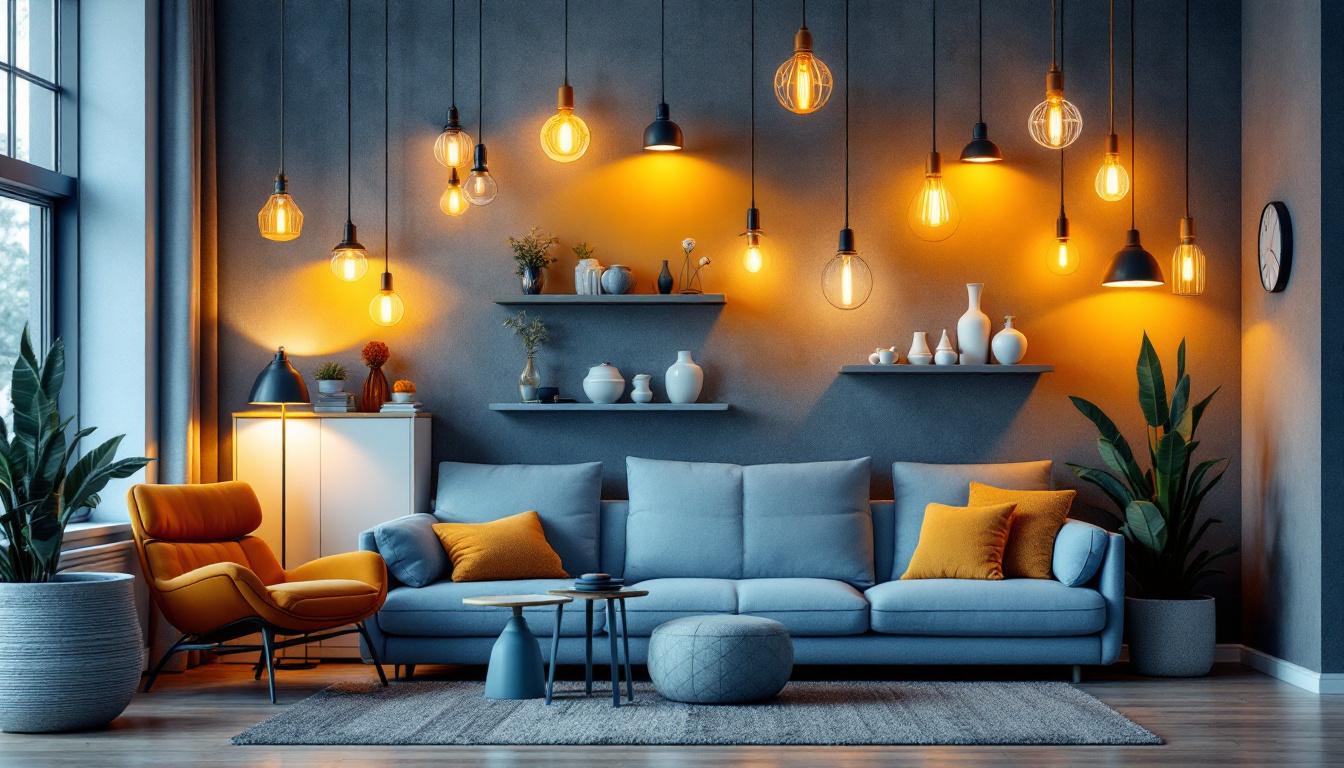
Lighting contractors play a crucial role in the design and implementation of effective lighting solutions for various spaces. However, even the most experienced professionals can fall prey to common mistakes that can hinder project success and client satisfaction. Understanding these pitfalls is essential for improving service quality and ensuring that projects run smoothly. This article delves into some of the most frequent errors made by lighting contractors and offers insights on how to avoid them.
One of the most significant mistakes lighting contractors make is underestimating the scope of a project. This can lead to inadequate planning, budget overruns, and missed deadlines. It is essential to conduct a thorough assessment of the project requirements before proceeding.
Many contractors fail to take into account the full extent of the work required. This includes not only the installation of lighting fixtures but also considerations for wiring, dimming systems, and integration with existing electrical systems. A comprehensive assessment should involve a detailed walkthrough of the site, discussions with clients about their needs, and a review of any potential obstacles. Additionally, it is crucial to evaluate the environmental factors that may affect the installation, such as the building’s architecture, natural light sources, and even the local climate. By addressing these elements upfront, contractors can create a more accurate project timeline and budget, reducing the likelihood of unexpected challenges later on.
Clients often have specific preferences and expectations regarding lighting design. Ignoring these can lead to dissatisfaction and the need for costly revisions. Engaging clients throughout the planning process ensures their vision is incorporated into the final design, minimizing the risk of misunderstandings later on. To facilitate this, contractors can provide visual aids such as mood boards or 3D renderings that help clients visualize the proposed lighting solutions. Furthermore, fostering an open line of communication allows clients to express their thoughts and concerns, ensuring that the final outcome aligns with their aesthetic and functional desires. This collaborative approach not only enhances client satisfaction but also strengthens the contractor-client relationship, paving the way for future projects.
Lighting needs can evolve over time. Contractors should consider not only the immediate requirements but also how the space may be used in the future. This foresight can prevent the need for costly upgrades or replacements down the line, ultimately saving both time and money. For instance, as technology advances, clients may want to incorporate smart lighting solutions that offer greater control and energy efficiency. By planning for these possibilities, contractors can design systems that are adaptable and scalable, allowing for easy integration of new technologies as they become available. Additionally, understanding trends in lighting design and energy efficiency can help contractors recommend solutions that not only meet current needs but also align with sustainable practices, appealing to environmentally conscious clients.
Lighting calculations are fundamental to achieving the desired ambiance and functionality of a space. Neglecting these calculations can lead to poorly lit areas, excessive glare, or energy inefficiency.
Improper placement of fixtures can result in uneven lighting distribution. Contractors should utilize lighting design software or manual calculations to determine the optimal placement of fixtures based on the room’s dimensions and intended use. This ensures that light is evenly distributed, enhancing both aesthetics and functionality.
Each space has specific lumen requirements based on its purpose. For instance, a workspace may require brighter lighting compared to a cozy living area. Failing to calculate the necessary lumens can lead to either overly bright or insufficiently lit spaces. Understanding the recommended lumen levels for different environments is crucial for effective lighting design.
The color temperature of light can significantly affect the mood of a space. Contractors should be mindful of the Kelvin ratings of the bulbs they choose. Warmer temperatures (around 2700K) are suitable for residential settings, while cooler temperatures (5000K and above) may be more appropriate for commercial spaces. Selecting the right color temperature can enhance the overall atmosphere and functionality of the area.
In today’s environmentally conscious market, energy efficiency is more important than ever. Contractors who overlook this aspect may not only be doing a disservice to their clients but also missing out on potential savings and incentives.
Contractors should prioritize energy-efficient lighting options, such as LED fixtures, which consume less energy and have a longer lifespan compared to traditional incandescent bulbs. By educating clients on the benefits of energy-efficient lighting, contractors can help them make informed decisions that align with modern sustainability practices.
Smart lighting technology can enhance energy efficiency by allowing users to control lighting remotely, set schedules, and utilize motion sensors. Contractors should stay updated on the latest advancements in smart lighting and consider integrating these solutions into their projects. This not only adds value to the service but also meets the growing demand for smart home features.
It is essential for contractors to educate clients about the long-term benefits of energy-efficient lighting. Many clients may not be aware of how much energy savings can be achieved through thoughtful lighting design. Providing information on potential rebates or incentives for energy-efficient installations can also enhance client satisfaction and loyalty.
While it may be tempting to cut costs by opting for lower-quality materials, this can lead to problems down the line. Investing in high-quality fixtures and components is crucial for ensuring durability and performance.
Contractors who prioritize short-term savings may find themselves facing higher long-term costs due to frequent replacements or repairs. High-quality materials not only last longer but also often come with warranties that can save clients money in the long run. Educating clients about the value of investing in quality can help justify the initial costs.
Using subpar materials can lead to compatibility issues with existing systems or fixtures. Contractors should ensure that all components are compatible and meet industry standards. This attention to detail can prevent costly rework and enhance the overall quality of the installation.
Quality materials often offer better aesthetic appeal. Clients want their spaces to look polished and professional. By choosing high-quality fixtures and finishes, contractors can elevate the overall design, leading to increased client satisfaction and potential referrals.
Effective communication is vital in any project, yet many contractors struggle with this aspect. Miscommunication can lead to misunderstandings, delays, and dissatisfaction.
From the outset, it is essential to set clear expectations with clients regarding timelines, budgets, and project scope. Regular updates throughout the project can help keep clients informed and engaged, reducing anxiety and confusion.
Contractors should actively seek and listen to client feedback throughout the project. This not only helps to ensure that the client’s vision is being realized but also fosters a collaborative relationship. Being open to feedback can lead to improvements and refinements that enhance the final outcome.
Changes to the project scope or design should be documented clearly and communicated to all parties involved. This practice minimizes confusion and ensures that everyone is on the same page, reducing the likelihood of disputes or misunderstandings later on.
Safety should always be a top priority in any lighting project. Ignoring safety standards can lead to accidents, injuries, and legal issues.
Contractors must stay informed about local building codes and safety regulations. Compliance is not only a legal requirement but also a critical aspect of ensuring the safety of the installation. Regular training and updates on safety standards can help contractors maintain compliance.
Using incorrect installation techniques can lead to hazards such as electrical fires or equipment failure. Contractors should ensure that all installations are performed according to industry best practices, utilizing appropriate tools and techniques to guarantee safety and functionality.
Regular safety inspections throughout the project can help identify potential hazards before they become serious issues. Encouraging a culture of safety not only protects workers but also enhances the overall reputation of the contracting business.
Many contractors overlook the importance of following up with clients after project completion. This step is crucial for ensuring client satisfaction and building long-term relationships.
After the installation, clients may encounter issues or have questions about the new lighting system. A follow-up allows contractors to address these concerns promptly, demonstrating a commitment to customer service and satisfaction.
Following up also provides an opportunity to gather feedback on the project. Understanding what went well and what could be improved can help contractors refine their processes and enhance future projects.
Maintaining communication after project completion can lead to repeat business and referrals. Satisfied clients are more likely to recommend contractors to others, making follow-up an essential part of business development.
Lighting contractors have a significant impact on the quality and effectiveness of lighting solutions in various spaces. By being aware of common mistakes and taking proactive steps to avoid them, contractors can enhance their service quality, improve client satisfaction, and ultimately achieve greater success in their projects. Continuous education, attention to detail, and a commitment to communication are key components of a thriving lighting contracting business.
Don’t let common mistakes compromise your lighting projects. At LumenWholesale, we provide lighting contractors with the resources they need to excel. Our spec-grade lighting products come at unbeatable wholesale prices, ensuring you have access to the best without the burden of inflated costs. With our commitment to quality, affordability, and convenience, you can tackle any project with confidence. Say goodbye to middleman markups and hello to hassle-free bulk buying with free shipping. Elevate your lighting solutions today by visiting Wholesale Lighting at the Best Value and discover how we can illuminate your success.

Discover how hanging lamps with chains can illuminate new business opportunities for lighting contractors.

Discover how innovative light fixtures are revolutionizing home lighting, transforming aesthetics and functionality.

Discover how upgrading to fluorescent light fixtures can enhance efficiency and cost-effectiveness for lighting contractors.

Discover the top benefits of panel light LEDs for lighting contractors, including energy efficiency, easy installation, and enhanced design flexibility.